The Naval Aircraft Engineering Department (海軍飛机工程處, hǎijūn fēijī gōngchéng chù) was the first formal aircraft manufacturer of China, and produced mostly seaplanes. It was established in 1918 by the navy of the Beiyang government in Mawei, Fuzhou. Four engineers; Ba Yuzhao, Wong Tsu, Zeng Yijing, and Wang Xiaofeng, who had returned from Britain and the USA from studying, were reponsible for the design and manufacturing. 100 Supporting staff were also hired, but the company later grew to 300 employees. In 1928 it was renamed Naval Aircraft Manufacturing Department (海軍製造飛機處, Hǎijūn zhìzào fēijī chù). The factory moved to Shanghai in February 1931.
Type A Double-wing, Double Float Seaplane Trainer
甲型雙翼雙桴水上教練機 / Jiǎ Xíng Yī Hào Shuāng Yì Shuāng Fú Shuǐshàng Jiàoliàn Jī
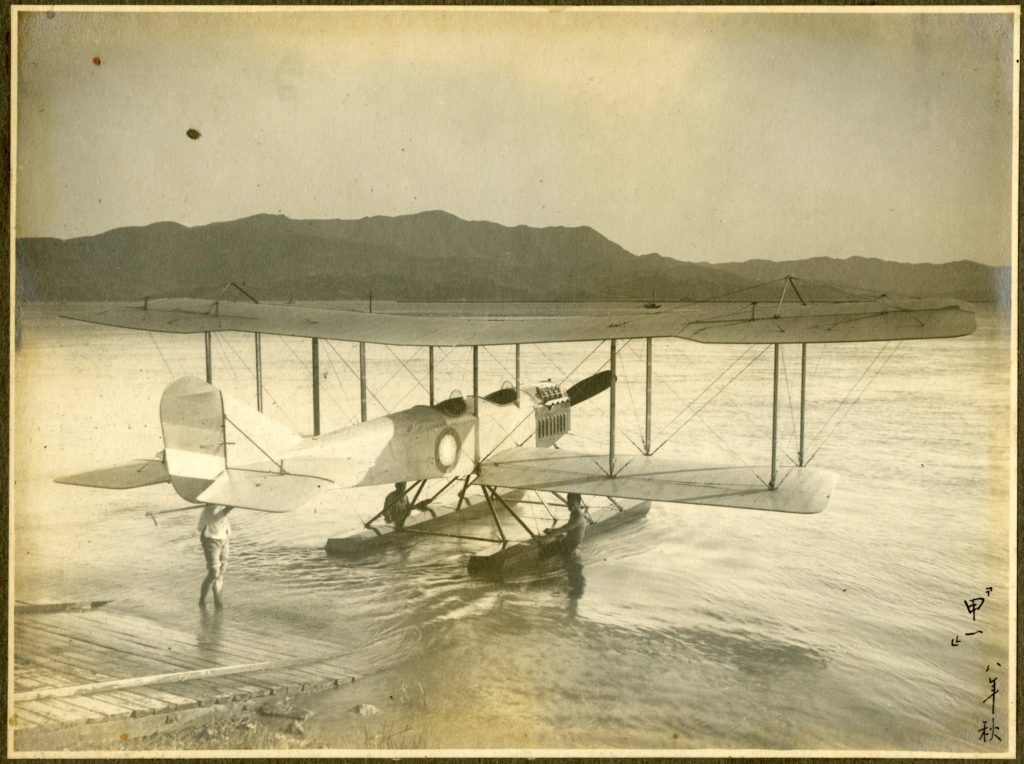
Courtesy of the National Cheng Kung University Museum
The 甲型 Jiǎ Xíng , or Type A, (also sometimes Chia Type, after the Chinese pronounciation) was the first aircraft developed. It was largely inspired by the Boeing Model C, which was previously designed by Wong Tsu. It was a double-float, two-seater seaplane. It was intended as a trainer, and as such both cockpits had controls, and extra consideration was given to give it stable flight characteristics. It could be used for reconnaissance and bombing as well. The main structure of the plane was made out of fir, supported by steel cables. This was covered by linnen fabric. The president of the Beiyang government stated in August 1921 that “the trial production of seaplanes by the Fuzhou Shipping Bureau was successful, and the director Chen Zhaoqiang led it well”
I. Only three protopes were produced:
- 甲型一号, Jiǎ xíng yī hào, Type A No.1. Build in August 1919. The plane crashed on during it second flight after climbing to 15 meter and stalling out, killing the pilot. The plane was scrapped in Febrary 1920.
- 甲型二号, Jiǎ Xíng Èr Hào, Type A No.1. Build in August 1920. This aircraft was tested by a British pilot, hired from a foreign company. Later the navy also send out two pilots to test the aircraft. 2 German pilots, Henk and Stumann were also invited to fly the plane several times and noted that the flight performance was quite good. The plane was scrapped in July 1920
- 甲型三号, Jiǎ Xíng Sān Hào, Type A No.1. Build in February 1921
In 2021 a full scale replica was revealed, which is on display at the location of the old factory of which the remnamnts still stand.
Model kit manufacuturer Bronco has made a 1/48 scale kit of this aircraft.
| Length | 9.32 meter | Crew | 2 |
| Wingspan | 13.7 meter | Cruising Speed | 104 km/h |
| Height | 3.88 meter | Maximum Speed | 126 km/h |
| Empty Weight | 836 Kg | Range | 340 km |
| Gross Weight | 1063 kg | Ceiling | 3690 meter |
| Powerplant | 100 hp Curtis OX-5 | Number build | 3 |
| Fuel capacity | 114 Liter | ||
| Armament | 4 bombs |




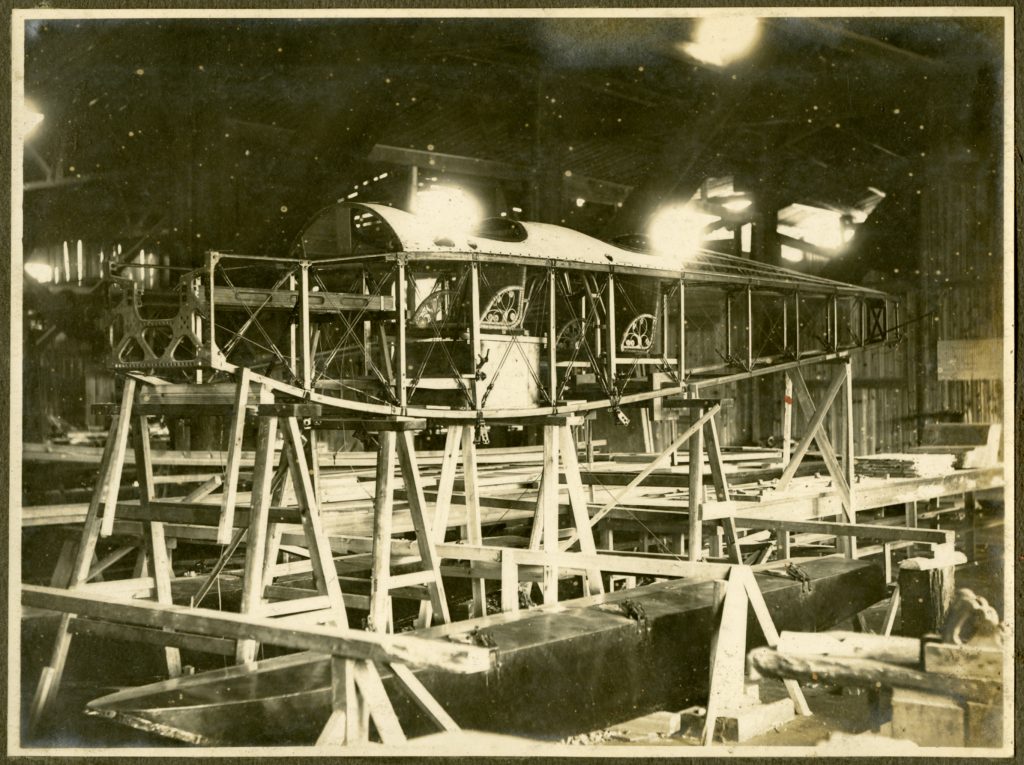
Courtesy of the National Cheng Kung University Museum
新甲三型, New Type A-3
After the Type A No.1 was scrapped in 1923, the engine was preserved. A new plane was constructed, known as the New Type A-3. The plane was similar to the A-1 and A-2, but was slightly smaller and had a larger wing and revisited ailerons and engine cover. The plane first flew in early 1926. It was written of in 1931.
Type B Double-wing, Double Float Seaplane Trainer
乙型雙翼雙桴水上教練機 / Yǐ Xíng Yī Hào Shuāng Yì Shuāng Fú Shuǐshàng Jiàoliàn Jī
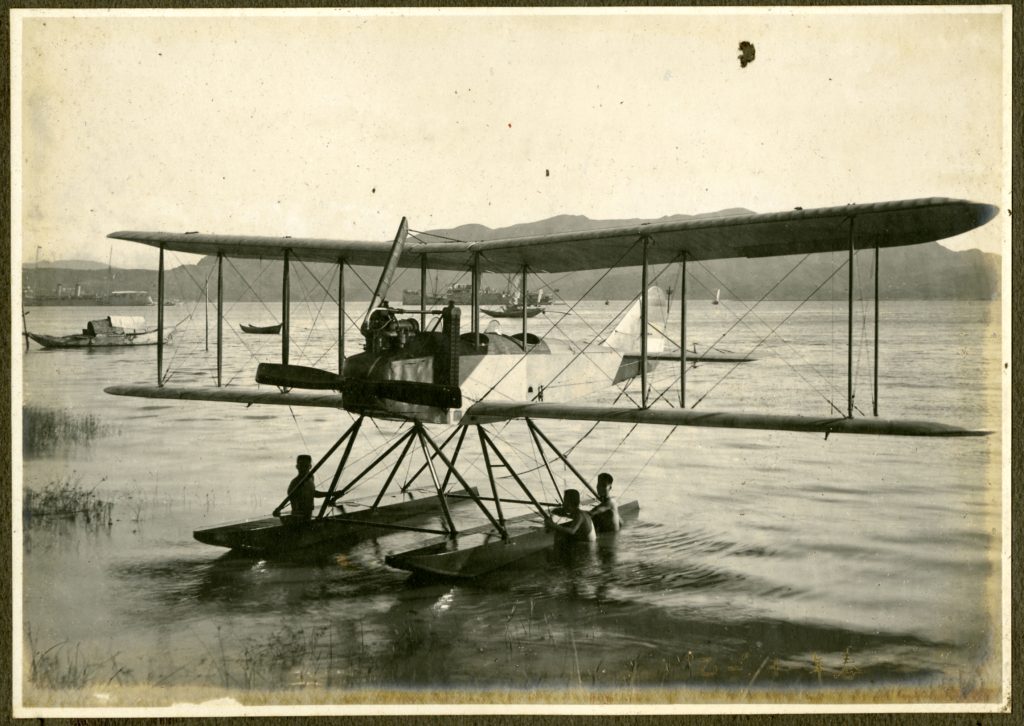
The 乙型 Yǐ Xíng , or Type B , (also sometimes I or Yee, after the Chinese pronounciation) was an advanced trainer based on the Type A, using a 100 hp Hall Scott engine and a smaller wing area. It was largely made of bamboo. The first plane was completed in 1921. A flight was done by R Hockney, an ex- RNAS pilot who was the manager of a local British company. This was 26 May 1921. It is unknown wether this was the maiden flight. The flight characteristics were not very good. Four planes had been constructed by October, of which the first two had already crashed.
The Type B No.1 was ordererd in February 1924 by the Gov
| Length | 9.20 meter | Crew | 2 |
| Wingspan | 11.49 m | Cruising Speed | |
| Height | 3.88 meter | Maximum Speed | 130 km/h |
| Empty Weight | 825 kg | Range | 360 km |
| Gross Weight | 1050 kg | Flight time | 3 hours |
| Powerplant | 100 hp Hall Scott | Maximum altitude | 3440 meter |
| Fuel capacity | |||
| Armament | 4 bombs |


Type C Double Wing Flying boat Bomber
丙型拖進式雙翼水上轟炸機 / Bǐng Xíng Tuōjìn Shì Shuāng Yì Shuǐshàng Sōngzhàjī

The 丙型 (Bǐng Xíng, Type C) (also sometimes Ping or Beeng, after the Chinese pronounciation) was a three-seat reconnaissance flying boat, with one pilot and two gunners. There was also space for 3 passengers. It’s full designation is 丙型拖進式雙翼水上轟炸機 (Bǐng Xíng Tuōjìn Shì Shuāng Yì Shuǐshàng Sōngzhàjī, Type C towed biplane water bomber). It was mainly constructed of fir and white chestnut wood.
Two aircraft were build. The first was build under the supervision of Russian lieutenant Mikhail Safonov and was completed in May 1924. On the 27th of May, Sofanov died when he crashed the plane. The second plane was finished in April 1925. A training aircraft called 江鹳 Jiāng guàn, “River stork” was possibly also build in April 1926, however no details are known, nor if this plane was actually build.
| Length | 12.3 meter | Crew | 6 (1 pilot, 2 gunners, 3 passengers) |
| Wingspan | 17.67 meter | Cruising Speed | |
| Height | 5.06 meter | Maximum Speed | 165 km/h |
| Empty Weight | 1910 kg | Range | 850 km |
| Gross Weight | 1950 kg | Flight time | 6 hour |
| Powerplant | 360 hp Rolls-royce Eagle | Maximum altitude | 3660 kg |
| Fuel capacity | |||
| Armament | 8 bombs 1 torpedo 1 machine gun |


Type D Coastal Patrol Flying boat and Torpedo Bomber
丁型雙翼海岸巡邏飛船兼魚雷轟炸機 / Dīng Xíng Shuāng Yì Hǎi’àn Xúnluó Fēichuán Jiān Yúléi Hōngzhàjī
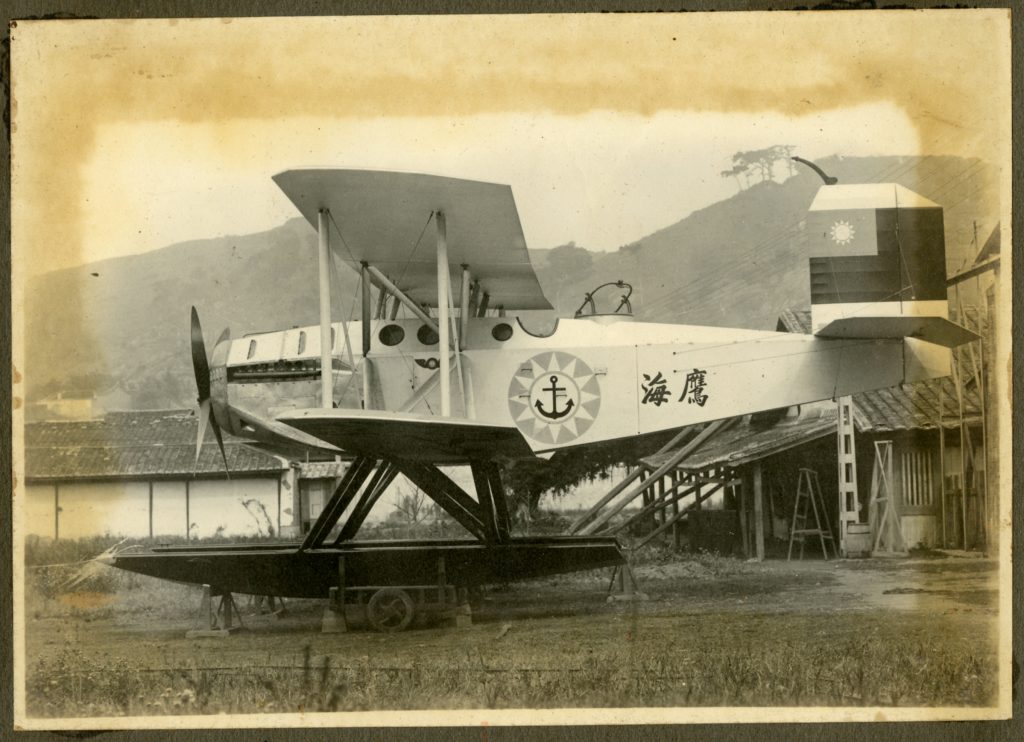
Courtesy of the National Cheng Kung University Museum
The 丁型 (Dīng Xíng, Type D) (also sometimes Ting , after the Chinese pronounciation) was a four-person torpedo bomber. It had two pilots side-by-side, with two gunner behind. A cabin inside the fuselage contained the bombing gear, but could also accomodate four passengers. A torpedo could be carried between the foats under the fuselage, no trails are known were a torpedo was dropped. Two aircraft were constructed, with possibly orders for two more in November 1929
- 海雕 (Hǎi diāo, Sea Eagle) was completed in August 1929. It was shipped from Fuchow to Shanghai in December 1929 by ship and assembled at the Kaochangmiao Naval Establishment by Captain Kao Shuching. On 19 February 1930 is was there succesfully tested, and by May it was prepared for shipment back to Shanghai.
- 海鷹 (Hǎi Yīng, Sea Hawk) was completed September 1929.
- 海鷗號 (Hǎi’ōu hào, Seagull)
| Length | 21.95 meters | Crew | 2 pilots, 2 gunners, optionally 4 passengers |
| Wingspan | 14.06 meters | Cruising Speed | |
| Height | 5.29 meters | Maximum Speed | 177 km/h |
| Empty Weight | 1565 kg | Range | 900 km |
| Gross Weight | 2430 kg | Ceiling | 4900 meter |
| Powerplant | 360 hp Rolls-royce Eagle | Number build | 2 production 1 possible training aircraft |
| Fuel capacity | |||
| Armament | cannon (?) 2 turreted machine guns 8 bombs 1 torpedo | ||



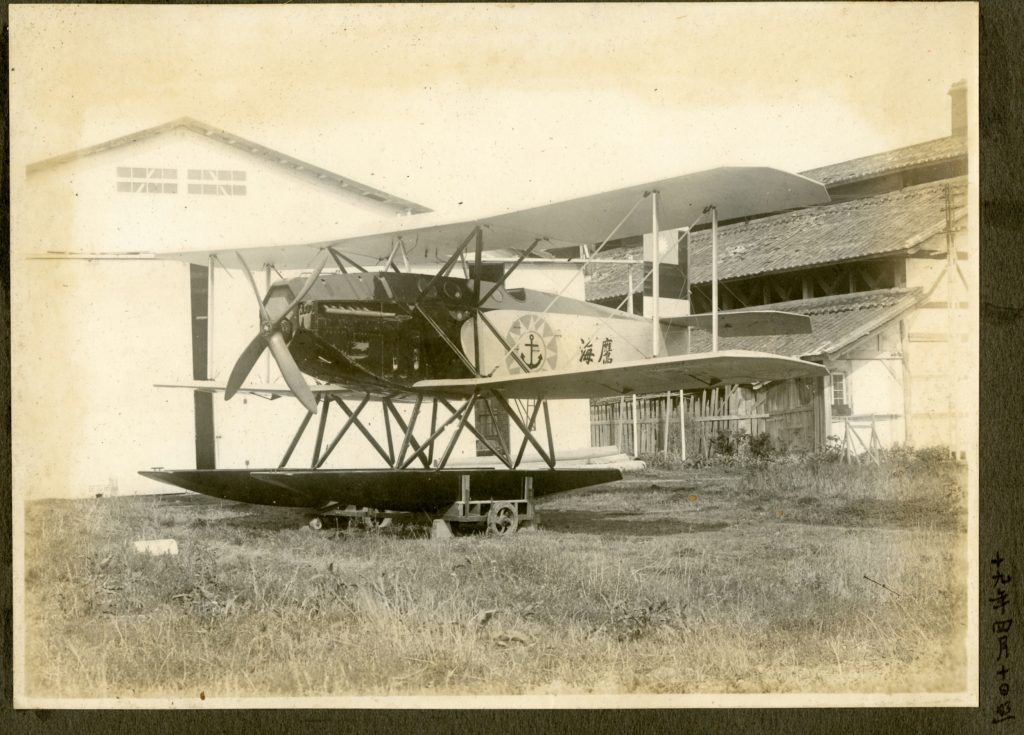
Courtesy of the National Cheng Kung University Museum

Type E Double Float Sea Biplane Trainer
戊型雙桴水上教練機 / Wù Xíng Shuāng Fú Shuǐshàng Jiàoliàn Jī
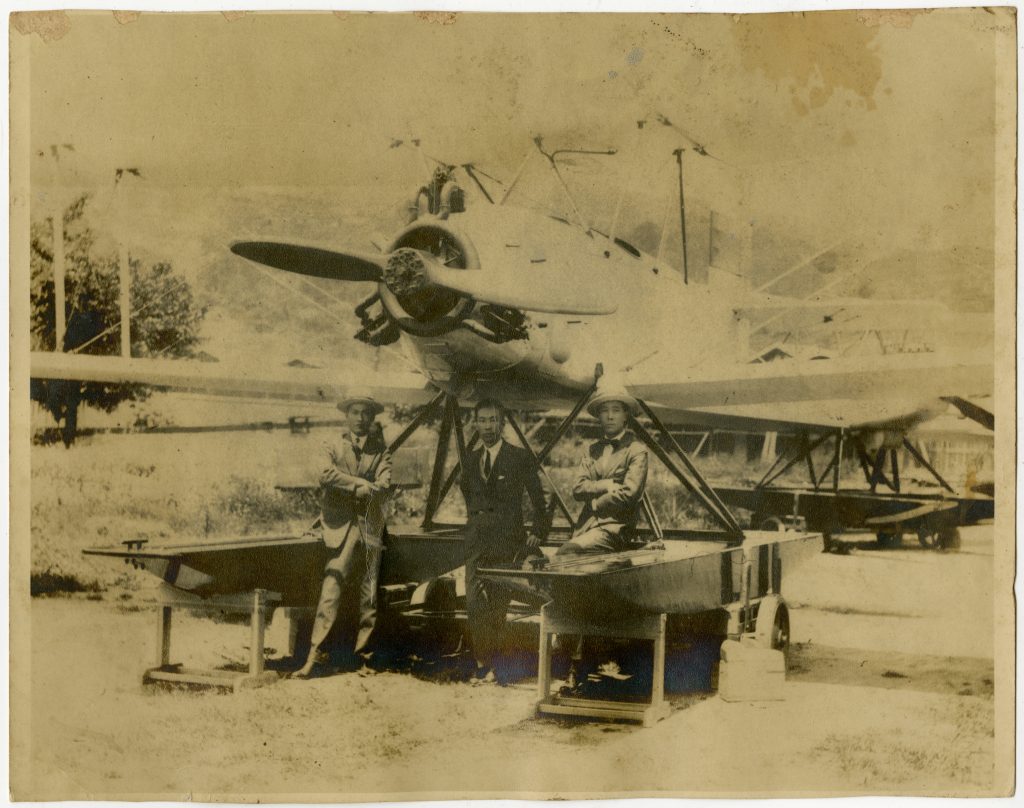
F.l.t.r. Zeng Yijing (曾詒經), Ba Yuzao (巴玉藻) and Wang Zhu (王助)
The 戊型 (Wù Xíng, Type E) was a three person reconnaissance / general purpose floatplane. It was constructed using a wooden Warren truss fuselage with no metal fittings or wires. Three planes were created. Camera equipment could be installed.
In September 1927, Wang Zhu (王助), Deputy Director of the Naval Aircraft Engineering Bureau, led flight instructors Lin An (林安) and Chen Shenhu (陳神護), along with the aircraft Jiāng Guàn and Jiāng Lù, to Shanghai’s West Battery along the Huangpu River to carry out combat readiness missions. These planes were used operationally in the Northern Expedition on the banks of Huangpu River after the navy switched sides.
In May 1928, the Northeastern Navy dispatched the warships 海圻 (Haiqi) and 鎮海 (Zhenhai) to attack Wusongkou. Aircraft from the Zhenhai launched attacks on defensive forces. In response, A-3 and E-2 were deployed, successfully repelling the Northeastern Navy.
- 戊一江鸛 (Wù yī Jiāng Guàn, E-1 River Stork) was completed in April 1926 using an unspecified 100 hp inline engine, possibly a Hall-Scott A-7a.
- 戊二江鳧 (Wù Èr Jiāng Fú, E-2 River wigeon) was completed in April 1927 using a 100 Bristol Lucifer engine. Used an exhaust collection ring in front of the engine, with a long exhaust on the left side of the fuselage, setting it visually apart from the E-3.
- 戊三江鷺 (Wù Sì Jiāng Lù, E-3 River Heron) was completed in September 1927 using a 120-130 hp Bristol Lucifer engine. Records show that this aircraft was damaged in battle.
All aircraft were scrapped in February 1931.
Author’s note:
- Xiaoci states that there are four aircraft, but the aircraft they visually identify as the A-4, is in contemporary sources labeled as 戊三, the A-3 (Photo nr. 2010-001-0052-086, Wong Tsoo’s album).
- The names of these aircraft aren’t printed on the side, and sources don’t quite agree what name bore what name (and if the 3th plane bore any name at all).
Due to these discrepancies, there may be some errors. The information should be regarded as the best-effort by the author to find the truth.
| Length | Crew | 2 pilots, 3 passengers, one observer in the front. | |
| Wingspan | Cruising Speed | ||
| Height | 3.7 meter | Maximum Speed | 130 km/h (Lucifer) |
| Empty Weight | Range | 390 km (Lucifer) | |
| Gross Weight | Ceiling | ||
| Powerplant | 100-120 hp Bristol Lucifer (2nd and 3th plane) | Number build | 3 |
| Fuel capacity | |||
| Armament | bombs |





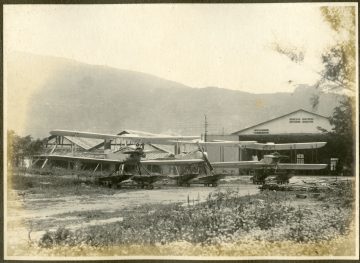
Courtesy of the National Cheng Kung University Museum
Type F Double-wing, Double Float Seaplane Trainer
己型雙翼雙桴水上教練機 / Jǐ Xíng Shuāng Yì Shuāng Fú Shuǐshàng Jiàoliàn Jī
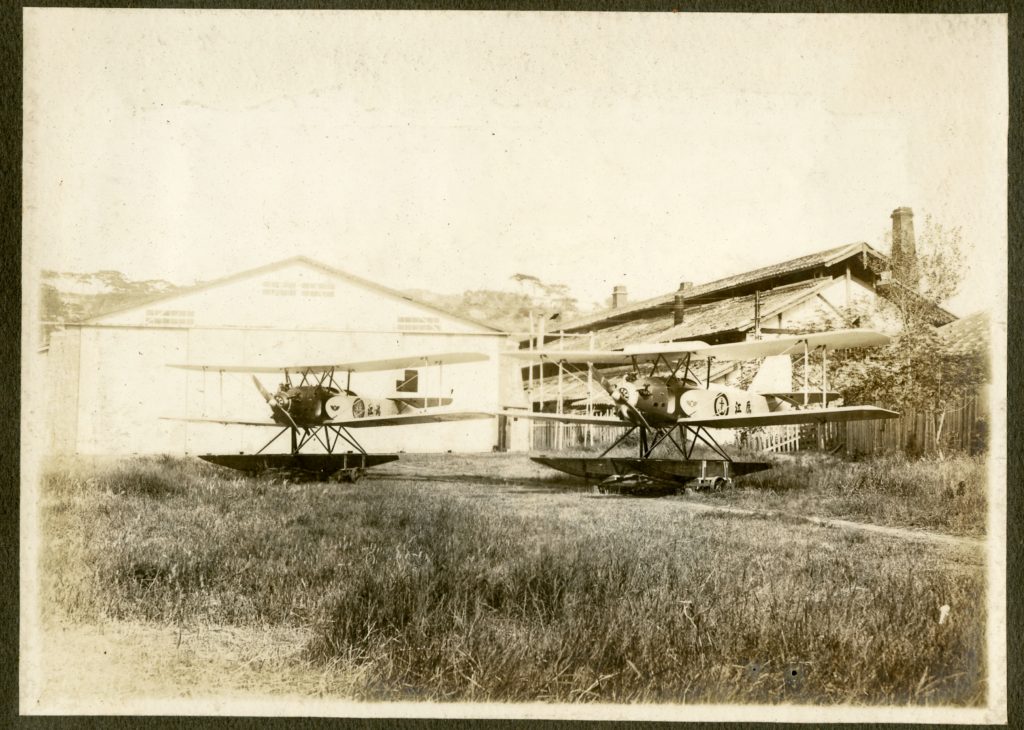
Courtesy of the National Cheng Kung University Museum
The 己型 (Jǐ Xíng, Type F) (also sometimes Chi or Gi) was a two-seat advancer trainer. It could also be used as a bomber or liaison aircraft. Two aircraft were completed. It was powered by a 165 hp Wright R-504E Whirlwind engine. Opposed to most aircraft developed by Mawei, it was constructed using a tubular frame. This was supplemented by fir wood covering. The angle of the tail could be adjusted during flight.
- 江鴻 (Jiāng Hóng / Chiang Hung, River Wild Swan). Construction began in September 1929, and was completed in June 1930. It was test-flown by Commander Chen Wen-lin and Hans Bertram, a German pilot hired by the Chinese navy. After official testing it was flown from Fuzhou to Xiamen and Back. In 1930, pilot 許成啟 (Xǔ Chéngqǐ) flew the Jiāng Hóng to Wuhan, marking the longest flight ever achieved by an aircraft manufactured by the Naval Aircraft Manufacturing Department.
- 江雁 (Jiāng Yàn / Chiang Yen, River Wild Goose) was completed in August 1930. Chen and Bertram were planning to fly to Singapore from Amoy with this aricraft, but this flight was never performed.
| Type F Double-wing, Double Float Seaplane Trainer 己型雙翼雙桴水上教練機 / Jǐ Xíng Shuāng Yì Shuāng Fú Shuǐshàng Jiàoliàn Jī | |||
|---|---|---|---|
| Length | 8.29 meters | Crew | 2 crew, 2 passengers |
| Wingspan | 10.98 meters | Cruising Speed | |
| Height | 3.78 meters | Maximum Speed | 177 km/h |
| Empty Weight | 730 kg | Range | 1230 km |
| Gross Weight | 1168 kg | Ceiling | 4800 meter |
| Powerplant | 165 hp Wright R-504E | Number build | 2 |
| Fuel capacity | |||
| Armament | 4 bombs under the wings. | ||




Type G Amphibious Foldable Wing Training and Reconnaissance Biplane
庚型一號水陸交換雙翼教練偵察機 / Gēng Xíng Shuǐlù Jiāohuàn Shuāng Yì Jiàoliàn Zhēnchá Jī

The 庚型 (Gēng Xíng, Type G) (also sometimes Keng or Gen) was developed from the type F, based on two new requirements:
- It needed to be usable for both sea and land training. To accomplish this, the aircraft’s landing gear and floats were designed to be interchangeable. The landing gear and float support struts, as well as their connecting joints, formed a complete set of landing apparatus. The aircraft’s center of gravity was equipped with a suspension point to allow the entire plane to be hoisted for conversion between configurations in approximately ten minutes.
- Space efficiency. To accomplish this the Type G had foldable wings. The fuselage was made narrower, and the central section of the upper wing matched the width of the fuselage. The wing chord was shortened to reduce the space required when the wings were folded. Due to the shorter chord and reduced wing area, combined with a limited spar length, “high-lift” airfoil sections were employed. The mechanism connecting the wings to the fuselage was simplified, enabling the wings to be folded or unfolded in under a minute.
In addition to these changes, the Type G also had a smaller tail surface. The rectangular float-shape of the Type F was also redesigned. The top of the floats were semi-circular and the bottoms were V-shaped curves. This streamlined design reduced resistance both in the air and on water. The frame and covering methods underwent significant updates, though the floats’ interior and exterior were still coated with tung oil and raw lacquer. Both cockpits were equipped with controls.
Two aircraft were produced.
- 庚型一号 「江鶴」 (Gēng Xíng Yī Hào “Jiāng hè”, Type G Model 1 “River Crane”)
was completed and succesfully tested on October 5th, 1931. - 庚型一号 「江鳳」 (Gēng Xíng Èr Hào “Jiāng Fèng“, Type G Model 2 River Phoenix*)
The Jiāng Fèng was completed and successfully tested in October 1931. On June 13, German pilot Brill conducted a flight demonstration at Shanghai’s Jiangwan Airfield, using it’s floats. Brill . Later in the same month, Brill together with 曾詒經 (Zēng Yíjīng, Y K Tseng) made a tour up de the Yangtze river. Starting in Shanghai, they passed Zhenjiang, Nanjing, Wuhu, Anqing, Jiujiang, and Hankou, arriving in Yuezhou on June 27. They planned to continue to Changsha but returned to Shanghai for repairs due to water leakage in the floats caused by rough conditions on the Yangtze River.
This long-distance flight aimed to assess the aircraft’s performance. The findings revealed that the floats were not robust enough to withstand significant wave impact, highlighting areas for improvement in the manufacturing process. After repairs, the Jiāng Fèng was refitted with landing gear for land operations and flew to Hangzhou and Xiamen.
* The Fenghuang are chinese mythological birds. While often translated as “Chinese phoenix”, their similarities to their Greek mythological counterparts is superficial.
| Length | 8.2 meter (floats) 7.18 meter (wheels) | Crew | 2 |
| Wingspan | 9.82 meter | Cruising Speed | |
| Height | 3.3 meter (floats) 3.0 meter (wheels) | Maximum Speed | 100 km/h |
| Empty Weight | 750 kg (floats) 675 kg (wheels) | Range | 1150 kg (floats) 1260 kg (wheels) |
| Gross Weight | 1116 kg (floats) 1038 kg (wheels) | Ceiling | 3810 meter (floats) 4260 meter (wheels) |
| Powerplant | 165 hp Wright R-504E | Number build | 1 |
| Armament | 4 bombs |
Type H Ship-borne Folding-wing Reconnaissance Sea-biplane
辛型艦載水上飛機雙層摺合翼偵察機 / Xīn Xíng Jiànzài Shuǐshàng Fēijī Shuāng Céng Zhéhé Yì Zhēnchá Jī

The 辛型 (Xīn Xíng, Type H) (also sometimes Hsin) was developed as a replacement for the Aichi AB-3 for usage on the river cruiser 甯海 (Ning Hai, peaceful seas). In 1932, The navy reported that the the AB-3 wasn’t found satisfactory as it didn’t have folding wings, meaning it had to be disassembled for stowage. Therefore, an order was placed for a new plane. A new plane was designed by Mar Te-tsu. It was quite similar to the AB-3, but had folding wings. The engine used was a backup engine of the AB-3.
A single Type H was build, bearing the same name as the ship, Ning Hai (甯海, sometimes spelled 寧海). It was completed in July 1933. On August 6, Navy flight instructors He Jian and Xu Chengqi conducted test flights. On October 10 1934, Chengqi flew the aircraft to Nanjing’s Xiaguan district, where a handover ceremony was hosted by Chen Shaokuan to deliver the aircraft to the “Ning Hai” cruiser.
In August 1937, shortly after the start of the Second Sino-Japanese War, China’s main fleet retreated from the south to the north and from the sea to the upper reaches of the Yangtze River. To block enemy advances, ships were scuttled along the Jiangyin stretch of the river to obstruct navigation, while resistance was mounted from the Jiangyin Fortress. The aircraft was transferred to the Aviation Committee under further orders, but its fate remains unknown. The cruisers Ning Hai, the Ping Hai were successively attacked by Japanese aircraft on August 23 and 24 and sunk near Jiangyin
Interestingly, the Ning Hai had provisions for two planes, however only one Type H was carried. The sister ship of the Ning Hai, the Ping Hai had it’s hangers removed and therefore didn’t need a plane.
| Length | 7.00 meter | Crew | 1 |
| Wingspan | 2.96 meter | Cruising Speed | |
| Height | 2.96 meter | Maximum Speed | ~170 km/h |
| Empty Weight | 600 kg | Range | 450 km |
| Gross Weight | 806 kg | Ceiling | 4400 meter |
| Powerplant | 130 hp Hitachi Jimpu | Number build | 1 |
| Armament | none | ||



Sources
- Andersson, L. (2008). A history of chinese aviation: Encyclopedia of aircraft and aviation in China until 1949. AHS of ROC.
- Wong, T. (1913). Wong Tsoo’s album. January 2, 2025, https://collections.culture.tw/ncku_collectionsweb/en/collection.aspx?GID=M7MDMIMKME
- Xiaoci, H. 中國飛機外篇(之九) 海軍製造飛機處 The Naval Air Establishment. (n.d.). http://cwlam2000.epizy.com/cafx09.htm
- https://nrch.culture.tw/Default.aspx